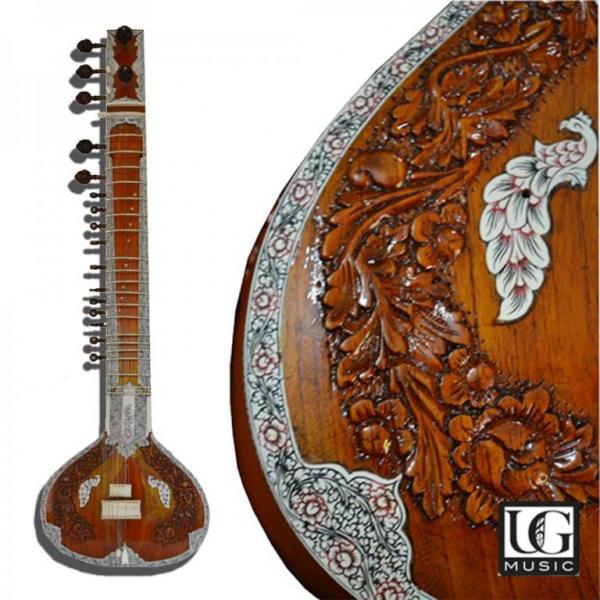- Apr 11 Apr, 2017
- SITAR Implements of Sound, Sitar
After celebrating Pandit Ravi Shankar, the man himself, lets celebrate his contribution to Indian music. The legend has immortalised the Sitar with such fervour that the design of the Sitar he played was hence forth called the "Ravi Shankar" Sitar. Earlier called the Kharaj Pancham Sitar, with the ornate, hand crafted, angur patta design is made from Red Cedar wood and is a little larger than the other design which is the Gandhar Pancham Sitar.
In this style of playing, the second string (jure) is tuned to the tonic, the fourth string (kharaj) one octave lower, the sixth (chikari) one octave higher and the seventh (chikari) two octaves higher. The fifth string (pancham chikari) is the fifth above the tonic and the third string (pancham) is the fifth in the low octave. The main playing string (baj or nayaki) is tuned to the fourth. When C# is chosen as the tonic, the tuning is as follows: f#, c#, G#, C#, g#, c#', c#".
The sympathetic strings (taraf) are tuned to the chosen scale, the longest sympathetic string is the tonic, and then they are tuned starting from the next lower seventh up to the high third. An important note can be tuned twice in the middle octave.
To purchase quality tested Kharaj Pancham Sitars check out our link here : https://goo.gl/rSKfsc
Sources : http://www.india-instruments.com, WIKIPEDIA











